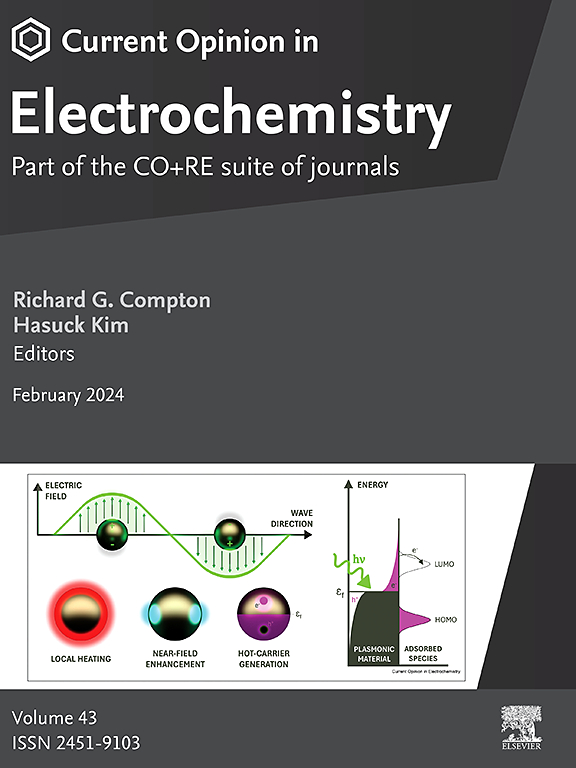ph -摆动电化学CO2捕获反应器设计
IF 6.9
2区 化学
Q1 CHEMISTRY, PHYSICAL
引用次数: 0
摘要
二氧化碳捕集在全球碳排放管理中起着举足轻重的作用,对下游碳利用和封存的经济可行性具有重要影响。电化学CO2捕集为有效地从大气和工业烟气中去除CO2提供了一个平台。当基于ph -摆动机制操作时,该过程可以高度耐受o2,并且适用于小型设施和大型工业工厂。因此,近年来人们一直在努力提高变ph电化学CO2捕集的效率。本文综述了高性能ph -摆动CO2捕集反应器,并重点介绍了最近的进展和仍然存在的挑战。它概述了系统的工作原理和性能指标,并展望了实现低成本、高耐用性和规模化开发的途径。本文旨在捕获可以将ph -摆动电化学CO2捕获发展为未来碳管理策略的关键组成部分的见解。本文章由计算机程序翻译,如有差异,请以英文原文为准。
Reactor designs for pH-swing electrochemical CO2 capture
CO2 capture plays a pivotal role in global carbon emission management, strongly impacting the economic feasibility of downstream carbon utilization and storage. Electrochemical CO2 capture provides a platform for efficiently removing CO2 from the atmosphere and industrial flue gases. When operating based on the pH-swing mechanism, the process can be highly O2-tolerant and adapted to both small-scale facilities and large industrial plants. In recent years, efforts have been therefore made to improve the efficiency of pH-swing electrochemical CO2 capture. This Review summarizes high-performance pH-swing CO2 capture reactors and highlights the recent advances and remaining challenges. It provides an overview of the system's working principles and performance metrics, along with an outlook on paths to low costs, high durability, and scale-up development. This paper aims to capture insights that can develop pH-swing electrochemical CO2 capture into a key component of future carbon management strategies.
求助全文
通过发布文献求助,成功后即可免费获取论文全文。
去求助
来源期刊

Current Opinion in Electrochemistry
Chemistry-Analytical Chemistry
CiteScore
14.00
自引率
5.90%
发文量
272
审稿时长
73 days
期刊介绍:
The development of the Current Opinion journals stemmed from the acknowledgment of the growing challenge for specialists to stay abreast of the expanding volume of information within their field. In Current Opinion in Electrochemistry, they help the reader by providing in a systematic manner:
1.The views of experts on current advances in electrochemistry in a clear and readable form.
2.Evaluations of the most interesting papers, annotated by experts, from the great wealth of original publications.
In the realm of electrochemistry, the subject is divided into 12 themed sections, with each section undergoing an annual review cycle:
• Bioelectrochemistry • Electrocatalysis • Electrochemical Materials and Engineering • Energy Storage: Batteries and Supercapacitors • Energy Transformation • Environmental Electrochemistry • Fundamental & Theoretical Electrochemistry • Innovative Methods in Electrochemistry • Organic & Molecular Electrochemistry • Physical & Nano-Electrochemistry • Sensors & Bio-sensors •
 求助内容:
求助内容: 应助结果提醒方式:
应助结果提醒方式:


